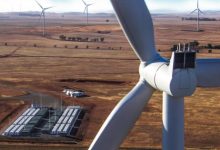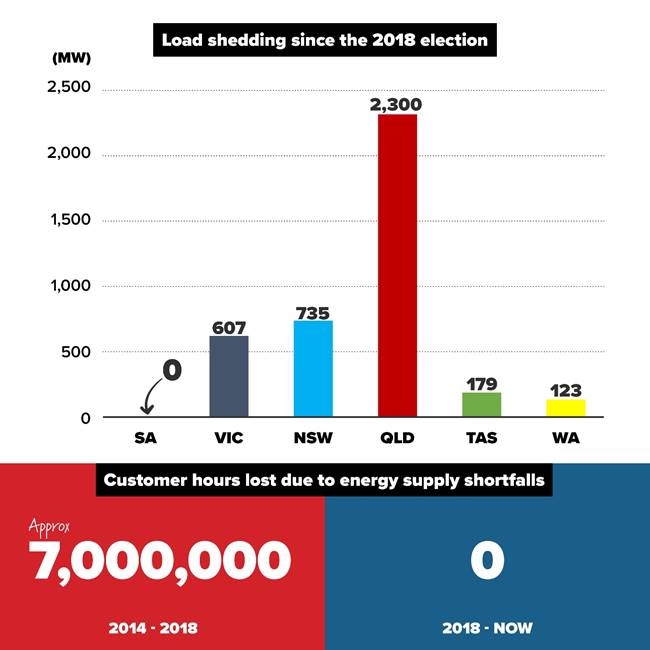South Australia’s Liberal government has celebrated the fifth anniversary of the controversial state-wide blackout by claiming that the state is now leading the country – both in terms of renewables, but also in the lack of any supply shortfalls.
“Five years ago South Australia was plunged into a statewide blackout that put lives at risk, inflicted immense damaged our economy and made us the laughing stock of the nation,” state energy minister Dan van Holst Pellekaan said in a statement.
“Today South Australia has the best performing electricity grid in the nation as the Marshall government’s energy policies have strengthened what was a fragile, unstable and highly vulnerable electricity network.”
The state-wide blackout, triggered by massive storms that tore down multiple transmission towers and three transmission links, quickly became a political football and an ideological battleground between parties pro-renewables, and those against.
It amplified the “when the wind don’t blow and the sun don’t shine” meme, but far from putting a stop to renewables, it ensured that more work was done to underpin the massive rollout of large scale wind and solar that followed.
In the past 12 months, South Australia boasts of a world-leading share of wind and solar of 62 per cent (up from 48 per cent at time of blackout).
That has been led by a world-leading share of rooftop solar that earlier this week reached 84 per cent of state demand, and could reach 100 per cent in the next month or so. That is unheard of in a gigawatt scale grid.
The state also boasts new resources, including three big batteries – at Hornsdale (then the world’s largest), Lake Bonney and Dalrymple North – several large scale “virtual power plants,” and new synchronous condensers that (along with the batteries) can provide the critical grid services once delivered by coal and gas.
The blackout also led to a more conservative approach from the market operator, which now seeks to ensure it has enough flexibility with the transmission links to Victoria, readily makes directions to ensure enough synchronous capacity and has introduced new protocols that allows it to shut down rooftop PV if needed.
South Australia is adding yet more wind and solar capacity, including the country’s biggest wind and solar hybrid project at Port Augusta, and has a huge pipeline of new wind, solar, battery and hydrogen projects that will be unlocked by the new transmission link to NSW.
The Liberal government has a stated target of reaching “net 100 per cent renewables” by 2030, but is likely to get there well before then. It is looking to produce five times the state’s grid demand from renewables in the future to satisfy the needs of renewable hydrogen and become a renewable export superpower.
Van Holst Pellekaan noted that there were approximately 7 million customer hours of outages due to energy supply shortfalls, and said that number had dropped to zero since the election of the Marshall government in 2018, making it the only state in the country to avoid forced outages during that time.
Interestingly, according to this graph provided by the minister’s office, it’s the two states with the biggest dependence on coal generators that have suffered the most load shedding – Queensland and NSW.
These figures are deeply ironic, because as energy analyst Simon Holmes à Court point out, the blackout marked the point when federal energy ministers (then Josh Frydenberg) began to intervene heavily into state markets. It is still happening under Angus Taylor.
“The system black… which for most South Australians lasted around 4 hours, was seen by many as the end to the state’s — and Australia’s — renewables ambitions,” Holmes à Court says.
“As we can see from the data (see graph below), it was a minor bump in the road, a warning to AEMO and the states to lift their game and ensure the road to decarbonisation of the grid was well managed.”

It also marked a low point in mainstream journalism. Who can forget then ABC political editor Chris Uhlman’s attempts to sheet the blame on wind power, with a couple of nonsensical claims that “wind has to be backed up by baseload”, and that “wind power frequency fluctuates with the breeze.”
It’s what happens when incomplete information is mixed in with an ideological bent. Baseload, still a favourite meme of mainstream media, is being consigned to the history books as the market moves on to flexible capacity, and batteries act as the sentries to frequency control – mostly needed when coal plants trip.
But it seems the mainstream parties are still seeking to score political points from the blackout.
“South Australians were let down by the former Labor Government’s chaotic energy policies that resulted in us having some of the most unreliable and expensive electricity in the world,” van Holst Pellekaan said in his statement.
“The Marshall government has made over two dozen substantive interventions to get energy security back under control since coming to government.
“What makes this achievement even more extraordinary is that the Marshall government has delivered a $303 reduction for the average household after bills went up $477 under the last two years of Labor.
“And we still have more benefits on the way for South Australian via Project EnergyConnect, the interconnector between South Australia and New South Wales.” He was sharply critical of Labor’s continued opposition to that project.
“Other measures adopted by the Marshall government to restore South Australia’s energy security include procuring world-first services from grid scale and home batteries to support the grid in disturbances,” he said.
“We have commissioned world-leading power system physics advice on how to run the grid, which has led to new operating rules to handle existing and emerging threats.
“We’ve brought in world-leading smart standards for solar, batteries, and appliances and supported key trials to make sure that consumers can be rewarded for supporting the grid.
“We’ve also secured key national reforms so that enough system security services are bought by networks, retailers are required to contract firm supplies to support customers, and large users can be rewarded for changing their demand to support the grid.”









